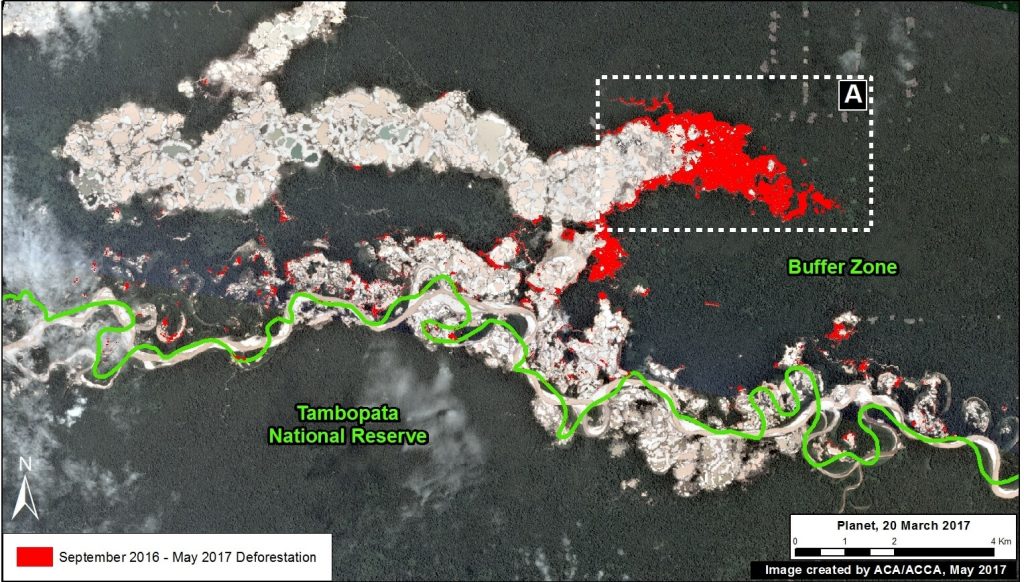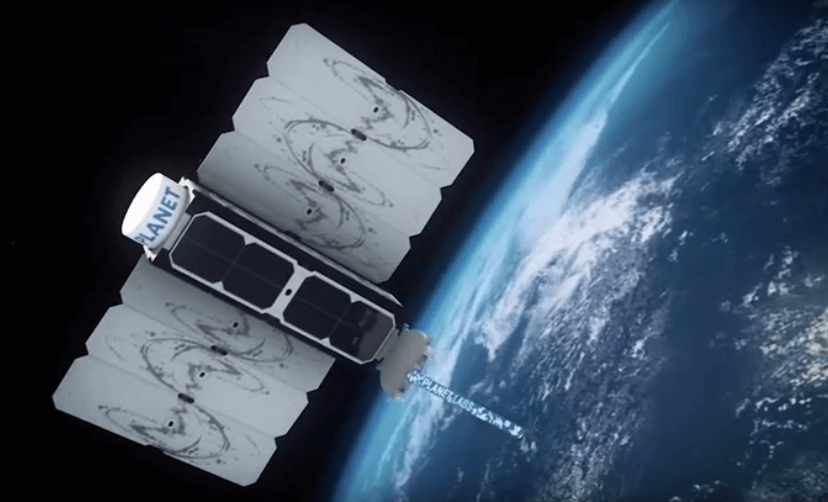 The morning is cool and a rainstorm seems inevitable today as clouds hang low over Villa Carmen Biological Station. Today is one of my last days as an artist-in-residence with Amazon Conservation and I’m anxious to retrieve my camera trap that I left a month ago in a dip in the trail on one of my favorite hikes. Trail nine is steep, gaining several hundred meters of elevation in under a kilometer. As I hike, macaws and parrots keep me company from tree tops, dropping fruit as they eat and chatter. As soon as I reach 800 meters I suddenly realize that I am hiking through clouds. This section of forest with its tall trees cloaked in mist is just magical.
The morning is cool and a rainstorm seems inevitable today as clouds hang low over Villa Carmen Biological Station. Today is one of my last days as an artist-in-residence with Amazon Conservation and I’m anxious to retrieve my camera trap that I left a month ago in a dip in the trail on one of my favorite hikes. Trail nine is steep, gaining several hundred meters of elevation in under a kilometer. As I hike, macaws and parrots keep me company from tree tops, dropping fruit as they eat and chatter. As soon as I reach 800 meters I suddenly realize that I am hiking through clouds. This section of forest with its tall trees cloaked in mist is just magical.
I make my way up to the small mirador and watch as waves of clouds move through the space obscuring and then revealing the bluish-green mountains and the confluence of rivers below. I spend time filming for my 360 video project, attaching the camera to trees hoping to relay the experience of this special scene. My primary project for my artist-in-residency is to pair 360 video with photos, camera trap images, audio and writing to re-create an immersive experience of what it’s like to be in the Amazon rainforest. As David Attenborough says, “No one will protect what they don’t care about; and no will care about what they have not experienced.” My hope is that this project will help others experience a bit of this amazing rainforest that has completely besotted me.

Margay captured on a camera trap April 4, 2017, trail 9, Villa Carmen Biological Station.
As I sit and spend a few more moments absorbing the beauty of this place, a mixed flock of birds flit between branches above me. I start photographing them and identify stunning Paradise tanagers, and even a Masked tanager, a new bird for me! Finally, I wind my way down from the mirador to the dip to discover what wildlife my camera trap has seen over the past month. I can hardly wait to hike back to the station to see what images will emerge.
As I return to my cabin, the wind has picked up and thunder rumbles nearby. I quickly cover my backpack and pull out my rain jacket and as I descend the trail, the rain arrives refreshing and clean. Halfway down the trail I hear the familiar whimper of capuchin monkeys. One large fellow eyes me warily before disappearing all the while calling out to his troupe.
Later when I put the camera trap card into the computer, I am swept away with pictures of jaguars, margays, pumas, jagarundis, pacas, agoutis, opossums and giant armadillos. While I hope one day to see some of the animals in person, it is enough to know they are out there, walking these same trails I did, protected and safe.


 The morning is cool and a rainstorm seems inevitable today as clouds hang low over
The morning is cool and a rainstorm seems inevitable today as clouds hang low over 
 The “rainbow mountains” of Ausangate have become a popular tourist destination for their unique colorful appearance. The Andean mountain range is striped with colors ranging from turquoise and lavender to maroon and gold due to millions of years of weathering of its unique mineral composition.
The “rainbow mountains” of Ausangate have become a popular tourist destination for their unique colorful appearance. The Andean mountain range is striped with colors ranging from turquoise and lavender to maroon and gold due to millions of years of weathering of its unique mineral composition. Ausangate mountains are also an important cultural element for local Peruvians, as the mountain range is believed to be the deity of Cusco and considered to be holy. In the month of April, one week before Corpus Christi, the festival of Quyllur Rit’i (which translates in the native Quechua language to “star snow”) brings together the local indigenous people of the Andes as a celebration of the stars. The mountains are inhabited by llama and alpaca herding communities, and constitute one of the few remaining pastoralist societies in the world.
Ausangate mountains are also an important cultural element for local Peruvians, as the mountain range is believed to be the deity of Cusco and considered to be holy. In the month of April, one week before Corpus Christi, the festival of Quyllur Rit’i (which translates in the native Quechua language to “star snow”) brings together the local indigenous people of the Andes as a celebration of the stars. The mountains are inhabited by llama and alpaca herding communities, and constitute one of the few remaining pastoralist societies in the world.  U.S., protection of the planet’s richest forest is more critical than ever, especially as we seek to halt global climate change.
U.S., protection of the planet’s richest forest is more critical than ever, especially as we seek to halt global climate change.


